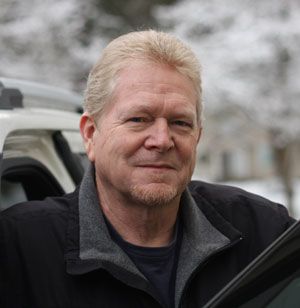Driving topic medley
The questions and comments readers send me regularly accumulate. Following are a few thoughts on some of the current buildup.
Reader M.B. recently relayed one of her her driving annoyances, writing, “Drivers that make turns over double yellow lines. I don’t mind when there is no traffic but when they hold up traffic I think that is against the law not to mention causing traffic backups. Good example is drivers going east on 29th ave and stop all traffic to turn left into the parking lot of Trader Joe’s. There is clearly a double yellow line they are crossing to make that move.”
I agree that drivers turning left in Lincoln Heights on 29th Avenue are seemingly inconsiderate. But unfortunately, they are not illegal, since Washington allows such turns. Per the Washington Driver Guide: “Two solid yellow lines between lanes of traffic means neither side can pass. You may cross yellow lane markings, except medians, to turn left if it is safe.” Painted medians are designated by a solid 18 inch line or by yellow crosshatchings between two solid yellow lines.
One also might argue that such turns are “unsafe,” but Washington RCW 46.61.130 states that a driver may legally turn left across a designated no passing zone (pavement marked with double yellow lines) when turning into or from an alley, private road or driveway.
Drivers could use the Regal intersection to make those turns, but with no left turn arrows on the traffic light there, the traffic backup is still the same as it is when the turn is made mid-block. My solution is to make my east/west passes through that region on streets other that 29th Avenue.
K.B. sent a note regarding the traffic in downtown Spokane, wondering, “What’s going on with the traffic increase downtown? I’ve never had to wait through 2 or 3 lights before now.”
I found a University of Michigan study by Michael Sivak and Brandon Schoettle that may shed some light on the topic.
Their research revealed that overall driving distance increased by 15% between 2000 and 2016. While that increase can be accounted for by the increase in population for the period studied, it’s of interest that urban driving increased by 33% during the same period while rural driving decreased by 12%.
A changing mix of urban versus rural population is part of the urban increase but does not fully account for the current traffic patterns. Sivak and Schoettle have suggested potential causal factors warranting further study, including: What are the ages, income and other demographics of recent urban arrivals? What economic changes in urban and rural areas might affect driving patterns? Who drives on rural versus urban roads and for what purposes since not all urban driving is done by urban residents and vice versa? What effect has increased internet access and online activity (personal and business) had on driving, especially in rural areas?
So, while part of our downtown traffic increase is obviously explained by population increase, there may be other factors such as those listed above at play. One factor affecting the perception of crowding and congestion is the ongoing road work downtown, which hopefully that won’t last forever!
Please send driving comments and questions to my attention. I may not have all the answers, but I enjoy discussing the topics that are on readers’ minds.
Readers may contact Bill Love via e-mail at precisiondriving@spokesman.com
